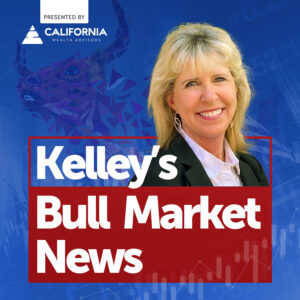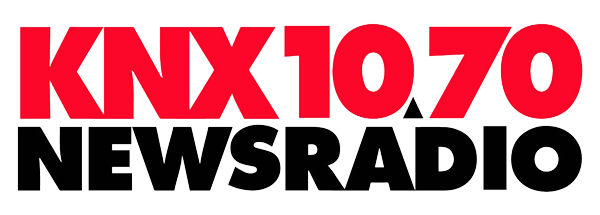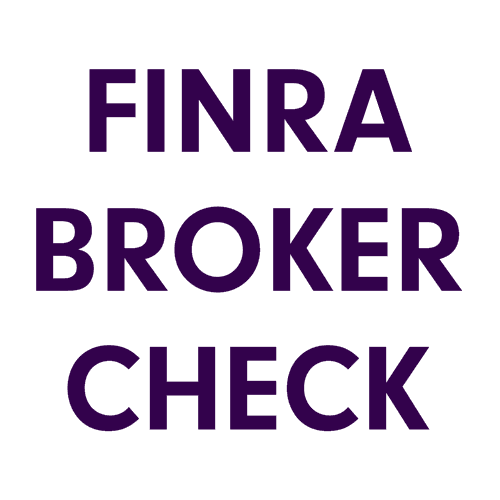U.S. Markets |
|||||||||||||||||||||||||||||||||||||||||||||||||||
| The stock market hit a pocket of turbulence in September, with investors turning cautious amid Delta variant infections, slowing economic growth and ongoing policy debate in Washington.
The Dow Jones Industrial Average fell 4.29 percent while the Standard & Poor’s 500 Index lost 4.76 percent. The Nasdaq Composite dropped 5.31 percent.1
Sour SentimentInvestor sentiment deteriorated throughout the month. Weighing on stocks was uncertainty about the Federal Reserve Bank’s tapering plans, the fiscal and tax policy proposals being debated in Washington, and the economic growth implications of continuing supply bottlenecks. China’s InfluenceThis unease culminated in the market’s reaction to news that a large, heavily indebted property development company in China was in danger of not making its scheduled interest payments—a prospect that could lead to the company’s bankruptcy. The angst dissipated quickly as investors realized that the company’s difficulties appeared limited. Fed’s UpdateWith that, the market turned its focus to the Federal Reserve’s Federal Open Market Committee meeting to learn what the Fed’s plan would be with tapering and interest rates. Fed Chair Jerome Powell said that tapering would not begin immediately, but could start by November 2021. The markets also learned that the day is drawing closer to when interest rates may be increased. The support among Fed officials for a rate hike has increased, with half of the 18 Fed members expecting that interest rates will be higher by the close of next year versus just seven who thought so in June.2,3,4 Higher YieldsJust as the market appeared to settle down, volatility picked up again as the 10-year Treasury yield climbed in the final trading days of the month. Technology and other high-growth stocks felt the bump in yields, which added to losses as the month closed. Sector ScorecardOnly two sectors managed gains in September, Energy (+7.26 percent) and Consumer Discretionary (+0.36 percent). The remaining sectors dropped, including Communication Services (-5.15 percent), Consumer Staples (-2.34 percent), Financials (-2.23 percent), Health Care (-4.27 percent), Industrials (-4.79 percent), Materials (-6.50 percent), Real Estate (-3.54 percent), Technology (-4.81 percent), and Utilities (-6.03 percent).5
|
|||||||||||||||||||||||||||||||||||||||||||||||||||
What Investors May Be Talking About in October |
|||||||||||||||||||||||||||||||||||||||||||||||||||
| Over the next several weeks, expect more talk about Jerome Powell, whose four-year term as Fed Chair ends in February 2022.
A survey earlier this year indicated that Wall Street overwhelmingly believed Powell would be renominated to a second term by President Biden, with even a greater share of respondents expressing the view that he deserved a second term. Biden is expected to act soon, knowing that any nomination needs to undergo a Senate confirmation process.6 Fed Chair Powell in the Crosshairs?But Powell’s prospects for being renominated appear to be less certain today. During an appearance by Powell before the Senate Banking Committee in September, a prominent committee member stated that she would not support Powell’s nomination. Other senators have voiced criticisms of Powell, though they have not publicly declared their opposition. Biden is not obligated to nominate Powell. For now, Powell continues to enjoy bipartisan support in the Senate for a second term, but if resistance to his renomination increases and throws a second term into doubt, it could have an unsettling impact on the markets. |
|||||||||||||||||||||||||||||||||||||||||||||||||||
World Markets |
|||||||||||||||||||||||||||||||||||||||||||||||||||
| The MSCI-EAFE Index slipped 3.18 percent in September, fighting the headwinds of a tightening monetary policy in Europe, multiple economic challenges in China, and political uncertainty in Germany and Japan.7
European stocks were mostly lower, with losses in Germany (3.62 percent), France (-2.40 percent), and the U.K. (-0.47 percent).8 Pacific Rim market performance was mixed, with China’s Hang Seng index down 5.04 percent and Australian ASX 200 off 2.69 percent. Japan bucked the trend, picking up 4.85 percent.9
|
|||||||||||||||||||||||||||||||||||||||||||||||||||
Indicators |
|||||||||||||||||||||||||||||||||||||||||||||||||||
Gross Domestic Product (GDP)The final read on second-quarter GDP growth was revised slightly higher, from 6.6 percent to 6.7 percent.10 EmploymentEmployers added 235,000 new jobs in August, below the consensus expectation of 720,000. The unemployment rate dipped to 5.2 percent, while wages increased 4.3 percent year-over-year.11 Retail SalesRetail sales posted a 0.7 percent gain, surprising economists who had expected a decline due to the Delta variant. Excluding autos, which fell 3.6 percent for the month primarily due to chip shortages, retail sales rose 1.8 percent.12 Industrial ProductionIndustrial output tacked on 0.4 percent, an increase that brought industrial production to pre-pandemic levels.13 HousingHousing starts increased by 3.9 percent, outpacing the consensus estimate of 1.6 percent.14 Existing home sales declined by 2.0 percent amid rising median prices (+14.9 percent year-over-year) and falling inventory (lower by 1.5 percent).15 New home sales rose 1.5 percent, as their median sales price reached $390,900, up from $325,500 just one year ago.16 Consumer Price Index (CPI)The rise in the cost of consumer goods and services moderated in August, rising 0.3 percent—below the increases seen in July (+0.5 percent) and June (+0.9 percent). Year-over-year, inflation rose 5.3 percent.17 Durable Goods OrdersOrders for goods designed to last three years or more climbed 1.8 percent in August, the biggest increase since May.18 |
|||||||||||||||||||||||||||||||||||||||||||||||||||
The Fed |
|||||||||||||||||||||||||||||||||||||||||||||||||||
| At the conclusion of its two-day meeting on September 22, the Federal Open Market Committee indicated that the Fed was ready to begin tapering its monthly bond purchase program, likely starting in November 2021. Fed Chair Powell thought that the tapering would conclude around mid-next year.
Interest rates may also move higher sooner than expected, as a survey of Fed officials now shows half believe that rates will be higher by the end of 2022.19 By the Numbers: Leaf-Peeping and Autumn |
|||||||||||||||||||||||||||||||||||||||||||||||||||
$3 billion20
Value of autumn tourism in New England
$460 million21
Value of autumn tourism in Vermont alone
3.5 million21
Number of people who journey to Vermont to see autumn leaves
Apple Cider22
Official beverage of New Hampshire
3622
Number of apples in a gallon of apple cider
1,20023
Number of apple trees left behind on the estate of John Chapman, a.k.a. Johnny Appleseed
Cider23
Primary use for apples from John Chapman’s trees
7,50022
Number of apple varieties, globally
30% increase22
Measured autumn growth of the hippocampus in the black-capped chickadee
15% increase20
Measured autumn growth of the hippocampus in the grey squirrel
74%22
Percentage of acorns forgotten by squirrels, leading to reforestation
| The content is developed from sources believed to be providing accurate information. The information in this material is not intended as tax or legal advice. Please consult legal or tax professionals for specific information regarding your individual situation. This material was developed and produced by FMG Suite to provide information on a topic that may be of interest. FMG Suite, LLC, is not affiliated with the named representative, broker-dealer, or state- or SEC-registered investment advisory firm. The opinions expressed and material provided are for general information and should not be considered a solicitation for the purchase or sale of any security.
Investing involves risks, and investment decisions should be based on your own goals, time horizon and tolerance for risk. The return and principal value of investments will fluctuate as market conditions change. When sold, investments may be worth more or less than their original cost. Any companies mentioned are for illustrative purposes only. It should not be considered a solicitation for the purchase or sale of the securities. Any investment should be consistent with your objectives, timeframe, and risk tolerance. The forecasts or forward-looking statements are based on assumptions, subject to revision without notice, and may not materialize. The market indexes discussed are unmanaged and generally considered representative of their respective markets. Individuals cannot directly invest in unmanaged indexes. Past performance does not guarantee future results. The Dow Jones Industrial Average is an unmanaged index that is generally considered representative of large-capitalization companies on the U.S. stock market. The S&P 500 Composite Index is an unmanaged group of securities considered to be representative of the stock market in general. The Nasdaq Composite is an index of the common stocks and similar securities listed on the Nasdaq stock market and considered a broad indicator of the performance of stocks of technology and growth companies. The Russell 1000 Index is an index that measures the performance of the highest-ranking 1,000 stocks in the Russell 3000 Index, which is comprised of 3,000 of the largest U.S. stocks. The MSCI EAFE Index was created by Morgan Stanley Capital International (MSCI) and serves as a benchmark for the performance in major international equity markets, as represented by 21 major MSCI indexes from Europe, Australia, and Southeast Asia. Index performance is not indicative of the past performance of a particular investment. Past performance does not guarantee future results. Individuals cannot invest directly in an index. The return and principal value of stock prices will fluctuate as market conditions change. And shares, when sold, may be worth more or less than their original cost. International investments carry additional risks, which include differences in financial reporting standards, currency exchange rates, political risks unique to a specific country, foreign taxes and regulations, and the potential for illiquid markets. These factors may result in greater share price volatility. The Hang Seng Index is a benchmark index for the blue-chip stocks traded on the Hong Kong Stock Exchange. The KOSPI is an index of all stocks traded on the Korean Stock Exchange. The Nikkei 225 is a stock market index for the Tokyo Stock Exchange. The SENSEX is a stock market index of 30 companies listed on the Bombay Stock Exchange. The Jakarta Composite Index is an index of all stocks that are traded on the Indonesia Stock Exchange. The Bovespa Index tracks 50 stocks traded on the Sao Paulo Stock, Mercantile, & Futures Exchange. The IPC Index measures the companies listed on the Mexican Stock Exchange. The MERVAL tracks the performance of large companies based in Argentina. The ASX 200 Index is an index of stocks listed on the Australian Securities Exchange. The DAX is a market index consisting of the 30 German companies trading on the Frankfurt Stock Exchange. The CAC 40 is a benchmark for the 40 most significant companies on the French Stock Market Exchange. The Dow Jones Russia Index measures the performance of leading Russian Global Depositary Receipts (GDRs) that trade on the London Stock Exchange. The FTSE 100 Index is an index of the 100 companies with the highest market capitalization listed on the London Stock Exchange. Please consult your financial professional for additional information. Copyright 2021 FMG Suite. |
1. WSJ.com, September 30, 2021
2. WSJ.com, September 22, 2021
3. WSJ.com, September 22, 2021
4. CNBC.com, September 22, 2021
5. Sectorspdr.com, September 30, 2021
6. CNBC.com, April 27, 2021
7. MSCI.com, September 30, 2021
8. MSCI.com, September 30, 2021
9. MSCI.com, September 30, 2021
10. CNBC.com, September 30, 2021
11. CNBC.com, September 3, 2021
12. CNBC.com, September 16, 2021
13. MarketWatch.com, September 15, 2021
14. CNBC.com, September 21, 2021
15. CNBC.com, September 22, 2021
16. USNews.com, September 24, 2021
17. WSJ.com, September 14, 2021
18. WSJ.com, September 27, 2021
19. WSJ.com, September 22, 2021
20. Reader’s Digest, September 14, 2020
21. Redbook, October 6, 2020
22. Best Life, September 8, 2020
23. FortWayne.com, September 18, 2003











